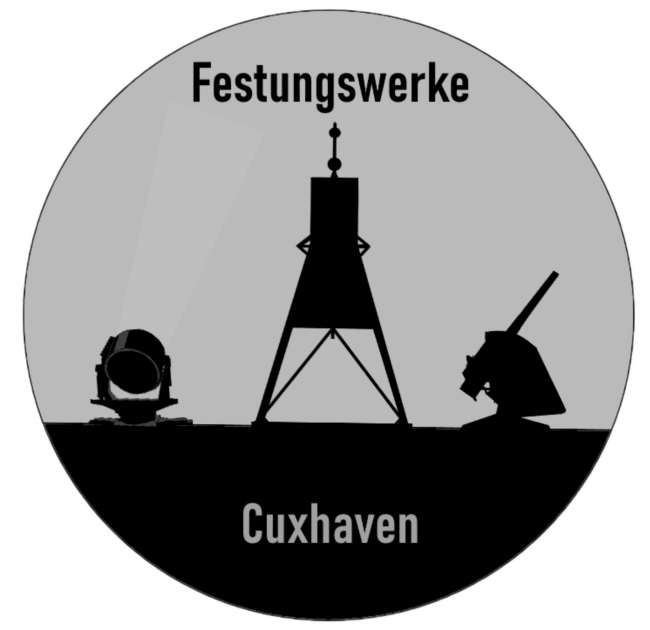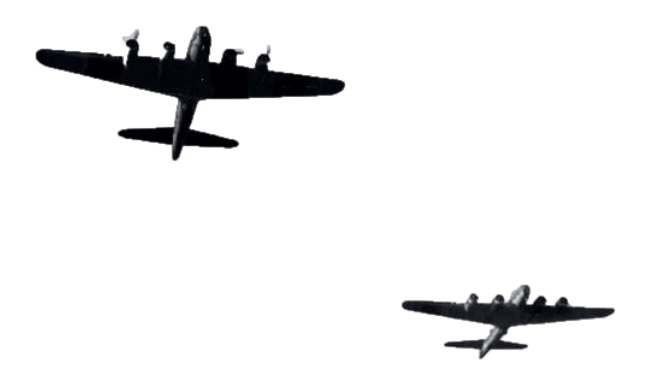

These pictures were probably taken during the air raid by the United States Army Air Force on April 18, 1944. The bombing began from the east near Groden-Neufeld and then moved over the Amerikahafen into the city center. 30 heavy bombers of the type Boeing B 17 "Flying Fortress" from the 4th Squadron of the 8th Bomber Command took part in this attack.
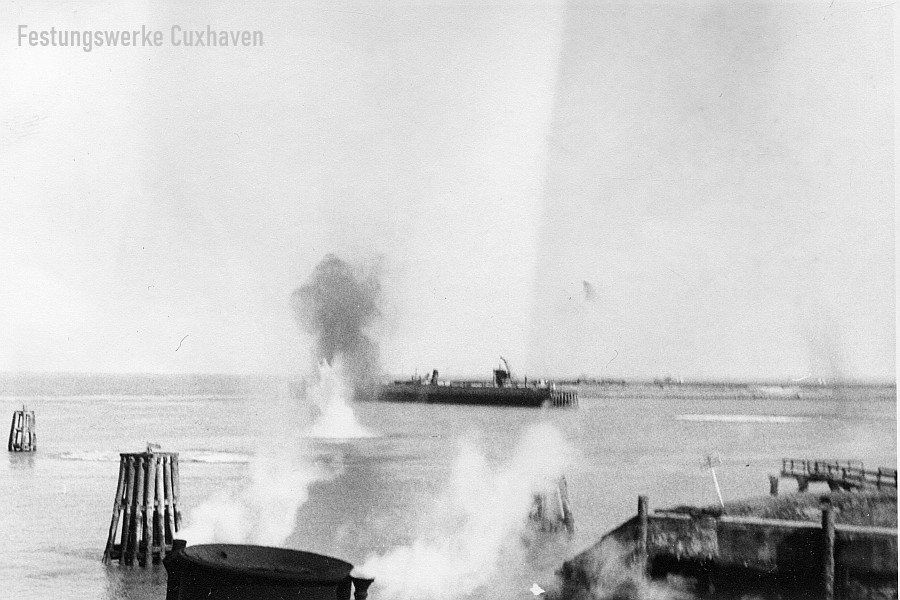
In the background is the eastern pier of the Amerikahafen. Various impacts can be seen in the water.Source: Cuxhaven City Archives 9e3-26110d
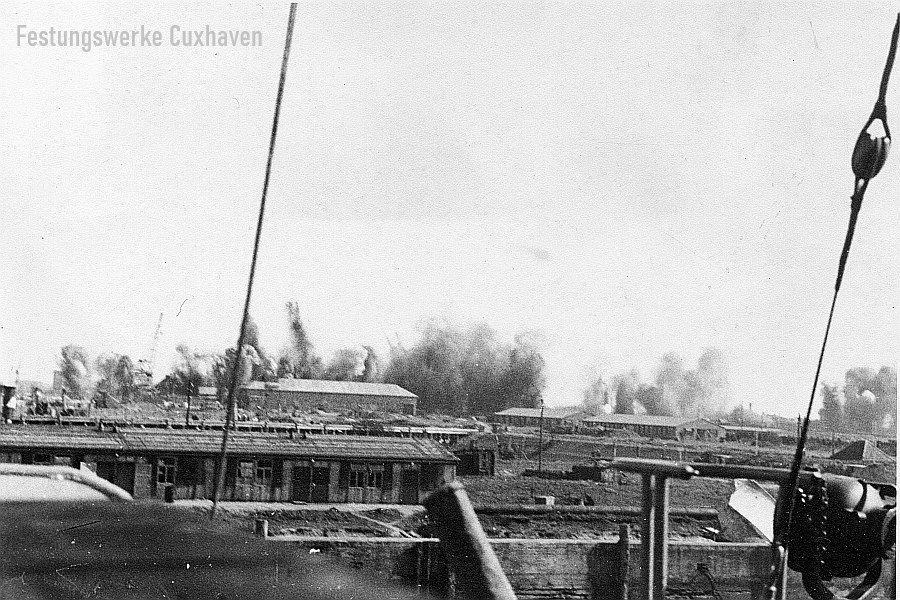
A massive carpet of bombs in the former barracks area of the minesweeper port (Amerikahafen).Source: Cuxhaven City Archives 9e3-26110h
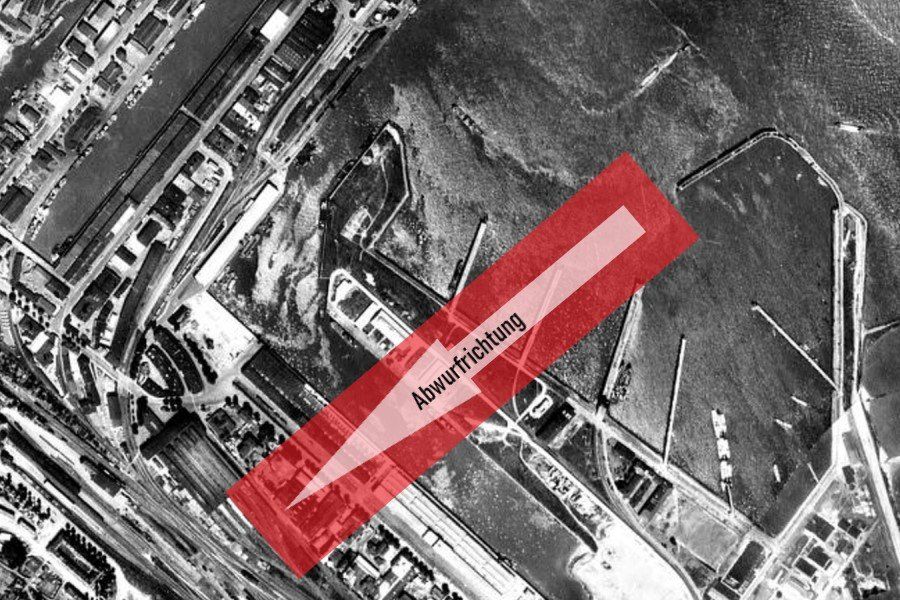
To clarify the view of the three photos. The photos were probably taken from a ship at the Lentzkai. In the past, access to the New Fishing Port was via the Amerikahafen and was dependent on the tide. The lock system to the outer harbor was only built in the 1950s.
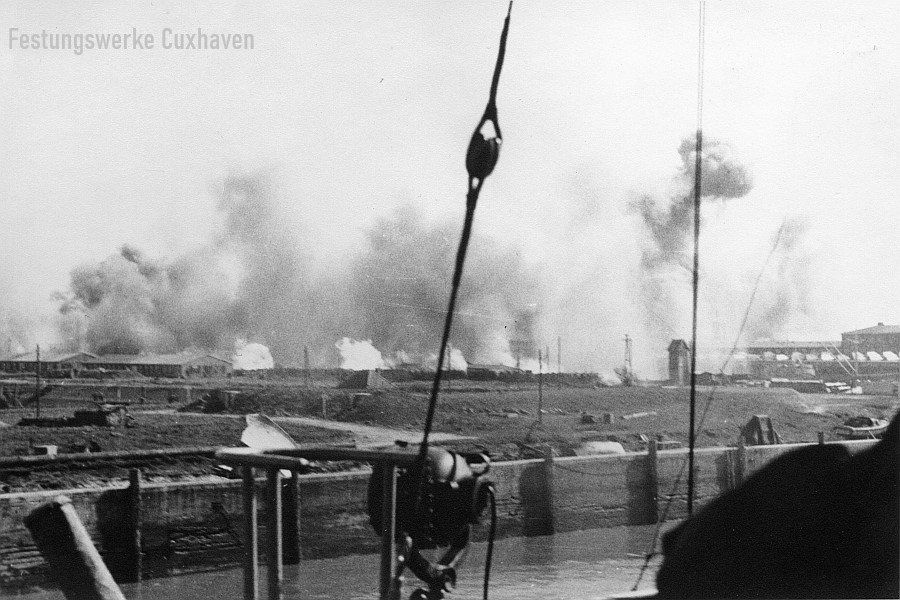
Lots of dust and various fires in the minesweeper harbor. On the right side are the buildings of today's fish halls 10 and 11 along the new fishing harbor. Source: Cuxhaven City Archives 9e3-26110c
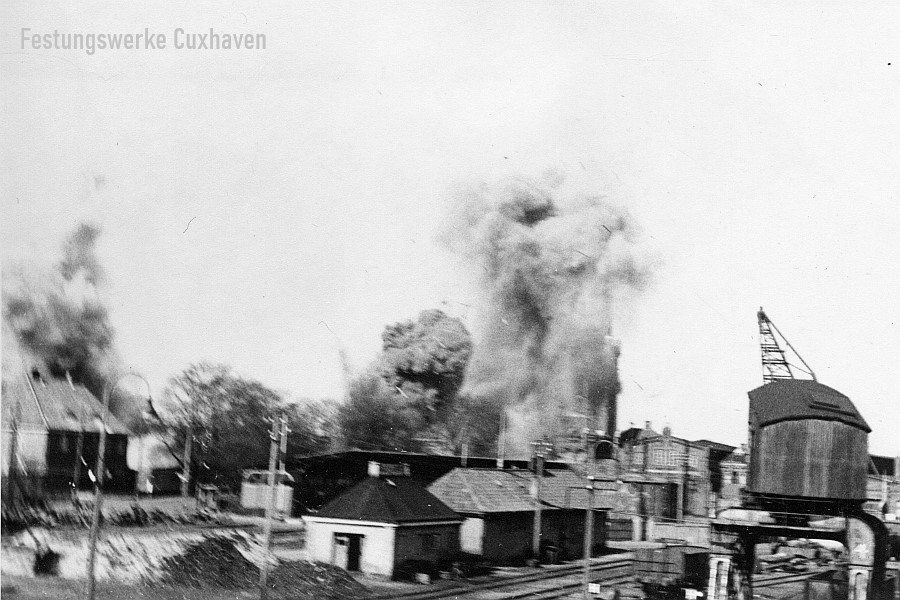
Strong explosions caused by bombs hitting the Hapag Hallen and Präsidenten-Herwig-Straße. To the right of the large explosion cloud, the tower of the Hapag Hallen can be seen in silhouette.Source: Cuxhaven City Archives 9e3-26110f
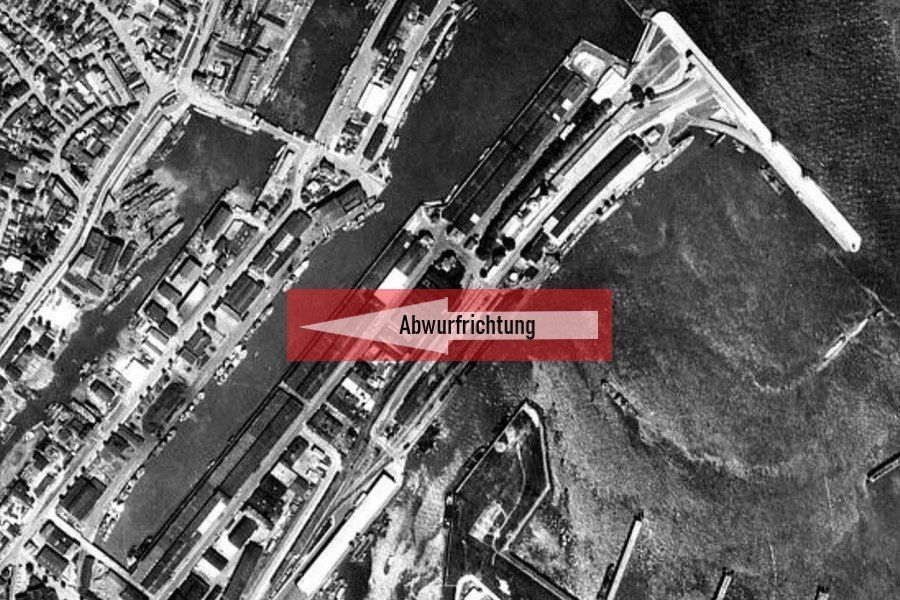
To clarify the view of the three images
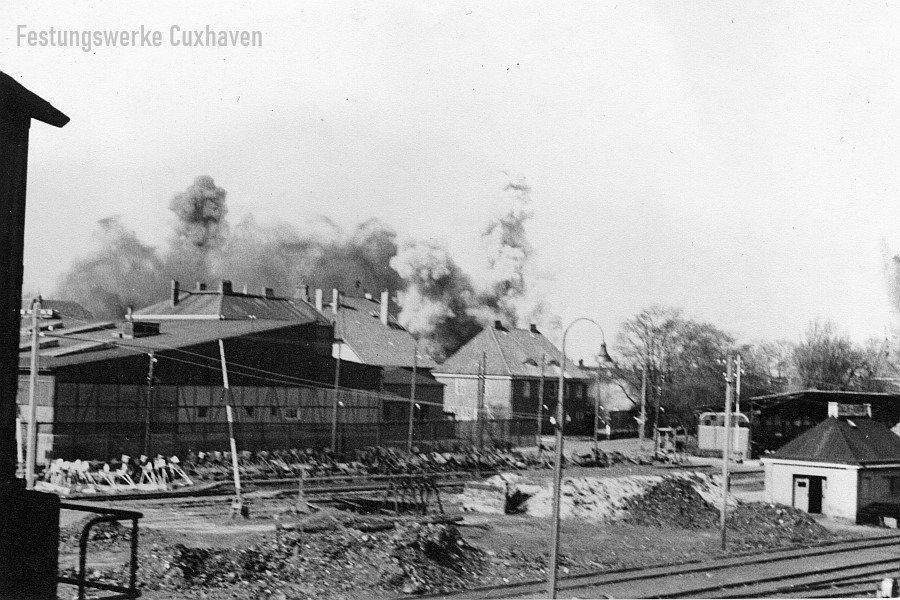
Heavy explosions at the Lübbertkai on the other side of the Hapag Halls.Source: Cuxhaven City Archives 9e3-26110a
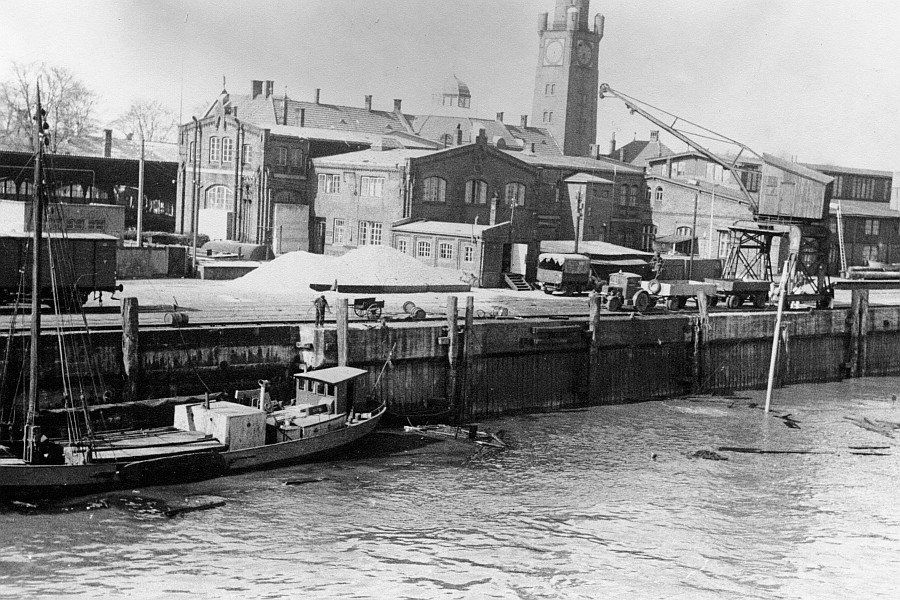
Shortly after the air raid, a sunken ship after a direct hit at Lentzkai.Source: Cuxhaven City Archives 9e3-26110i
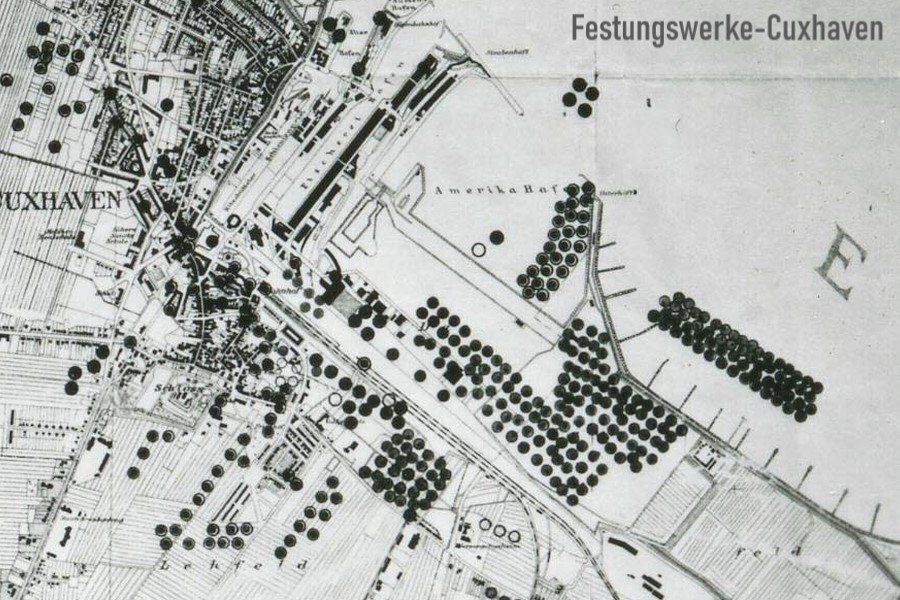
Image on the left: A section of the map of the bombings on June 11, 1943. The area of the photos from the area of the Hapag halls has not been documented here. The impacts are not listed, the reason for this is not known. Fortunately, a large part of the bomb load fell into the water and onto largely undeveloped land in the Groden-Neufeld area. The rest of the load, however, hit various parts of the city center and caused death and destruction.


